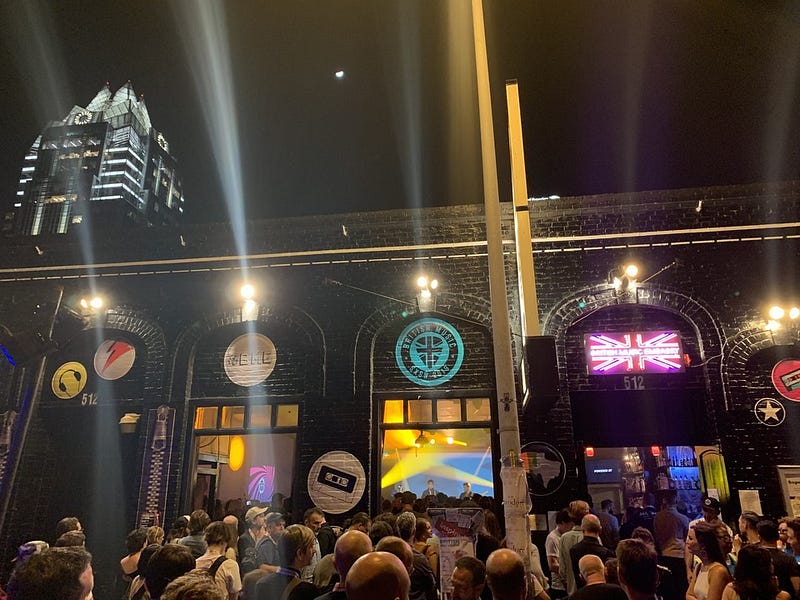Lessons from SXSW
This year was my second time attending SXSW and while I considered myself to be well prepared, I want to share some learnings that could be applied to any future conference. Some of these are based on observations I made, while others are from my personal experience attending SXSW and other conferences. This is really basic, commonsense information… but if you are new to the conference scene you may find this useful.

Please note. This article was first written in 2019 prior to the pandemic.
This year was my second time attending SXSW and while I considered myself to be well prepared, I want to share some learnings that could be applied to any future conference. Some of these are based on observations I made, while others are from my personal experience attending SXSW and other conferences. This is really basic, commonsense information… but if you are new to the conference scene you may find this useful.
Plans can change
While you may have it locked down in your calendar, thing’s can change fast. Traffic can get crazy, previous meetings can run overtime, people can fall sick or need to take care of urgent work. Be flexible with others, as you may need to ask the same should something come up that causes you to cancel or delay plans.
Alcohol
There’s plenty of opportunities to grab an alcoholic beverage during SXSW, with many free happy hours to entice you to attend. I’m not going to tell you to go easy, nor do I know what your alcohol tolerance levels are. I will say that when speaking with someone who doesn’t have a drink in their hand it may be worthwhile putting your drink down. You don’t know if they recently quit, or if they just don’t like the smell of alcohol on your breath. It is worth remembering with many meetings you have this will be the first (and possibly last) impression someone has of you. If you find that you have “overindulged”, it may be best to avoid that interaction and go get a snack and some water first.
Snacks
Breakfast plans fell through, I slept in, or just didn’t want to miss a last minute meeting. I started packing a granola bar in my pocket, which is more than enough to tide me over should I not be able to stop and eat. This saved me from a rumbling stomach during a meeting and gave me a boost of energy during the day.
Bring a notepad
I am guilty of staring at my phone way too much, we rely on our phones for almost everything now. To avoid staring at my phone I carried a pen and paper, and would take notes while speaking with people. This earns a much more positive response compared to pulling out my phone mid conversation. Perception is reality and if someone is speaking to you and you take out your phone and start typing, they may assume you aren’t interested or are texting someone. Writing notes is a great talking point as they can see what you write, offering more transparency and it shows that you are paying attention to what they are saying.
Small talk
Please, do not ask questions like “are you married” or “plans to have kids”. Let people choose what they want to tell you and give them the opportunity to share further if they choose. I find the best conversations start with “what’s new”, you are giving the person an opportunity to talk about anything they would like. They could tell you they just purchased a new home, started a new company, or saw a great panel. The best meetings I had were the ones where we didn’t “talk business” and talked about each other. I tell you what happened, when I got back from Austin and sent an email to those people, they responded quicker and more positively than any previous communication. People don’t remember everything that is said in a meeting but they remember how it makes them feel. If they laughed, smiled, cried, whatever, they felt something and that is what they remember of the conversation.
No business cards
I didn’t have enough business cards on hand this trip and to be honest i’m in two minds about the value of a business card. As an alternative, I would send a LinkedIn request after each interaction that lasted more than 5 minutes, not just a quick “nice to meet you”. In the connection request on LinkedIn I would add a note mentioning where we met. That way I hit their inbox, they see the connection request and it is time stamped. Once they opened the connection request with my note, they would see my photo and profile! This helps to jog memories (sometimes days after the meeting) and give them a look into my background and ways we could potentially work together.
It’s possible not all of this will apply to you, but this is what works for me and how I will continue to navigate these events. Please feel free to share your advice and feedback in the comments section. This is the first draft, if there is more interest I will expand and develop this further into a guide for all conference attendees.
Originally published at https://www.linkedin.com.